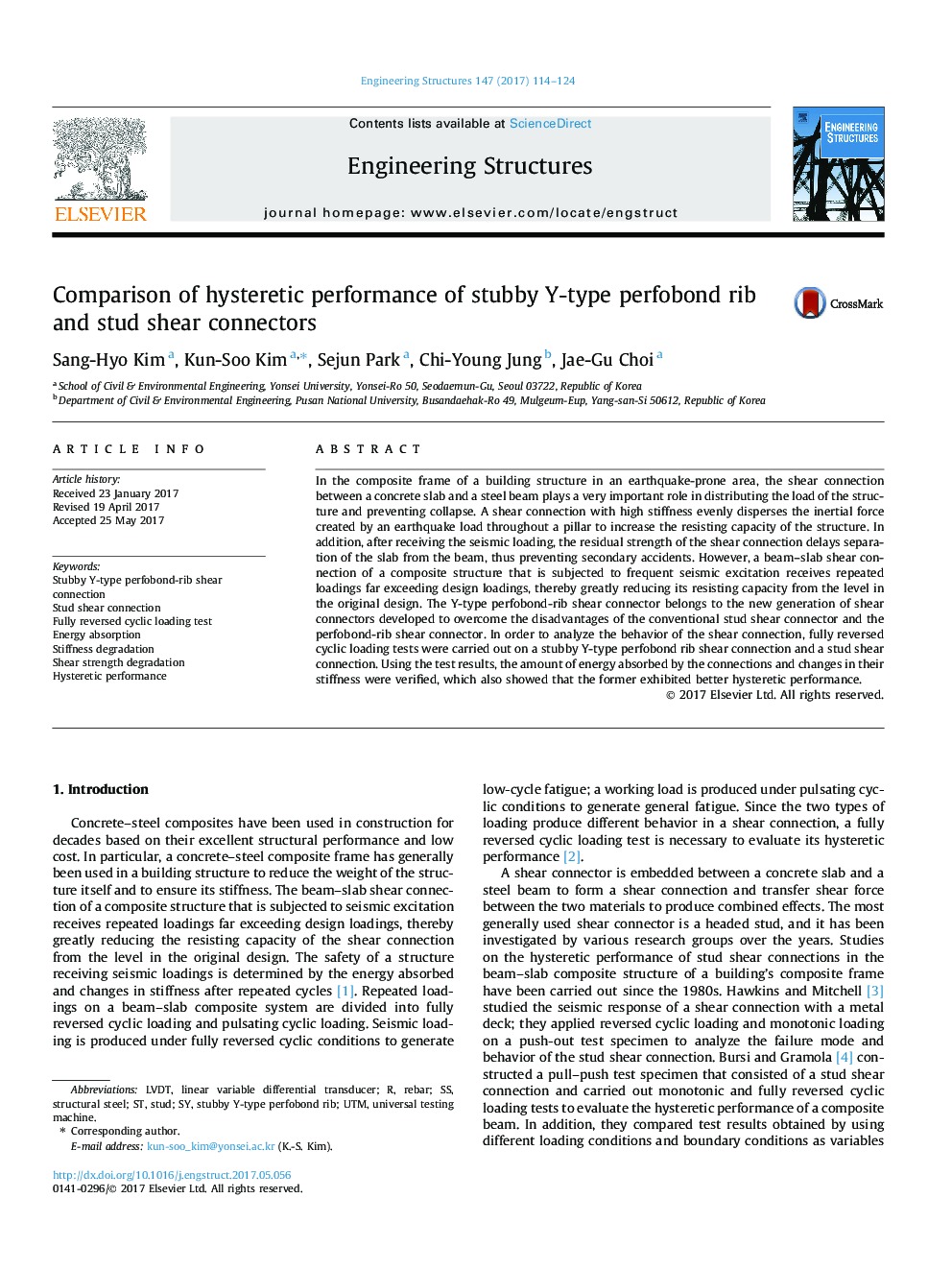| Article ID | Journal | Published Year | Pages | File Type |
|---|---|---|---|---|
| 4919899 | Engineering Structures | 2017 | 11 Pages |
Abstract
In the composite frame of a building structure in an earthquake-prone area, the shear connection between a concrete slab and a steel beam plays a very important role in distributing the load of the structure and preventing collapse. A shear connection with high stiffness evenly disperses the inertial force created by an earthquake load throughout a pillar to increase the resisting capacity of the structure. In addition, after receiving the seismic loading, the residual strength of the shear connection delays separation of the slab from the beam, thus preventing secondary accidents. However, a beam-slab shear connection of a composite structure that is subjected to frequent seismic excitation receives repeated loadings far exceeding design loadings, thereby greatly reducing its resisting capacity from the level in the original design. The Y-type perfobond-rib shear connector belongs to the new generation of shear connectors developed to overcome the disadvantages of the conventional stud shear connector and the perfobond-rib shear connector. In order to analyze the behavior of the shear connection, fully reversed cyclic loading tests were carried out on a stubby Y-type perfobond rib shear connection and a stud shear connection. Using the test results, the amount of energy absorbed by the connections and changes in their stiffness were verified, which also showed that the former exhibited better hysteretic performance.
Keywords
Related Topics
Physical Sciences and Engineering
Earth and Planetary Sciences
Geotechnical Engineering and Engineering Geology
Authors
Sang-Hyo Kim, Kun-Soo Kim, Sejun Park, Chi-Young Jung, Jae-Gu Choi,
